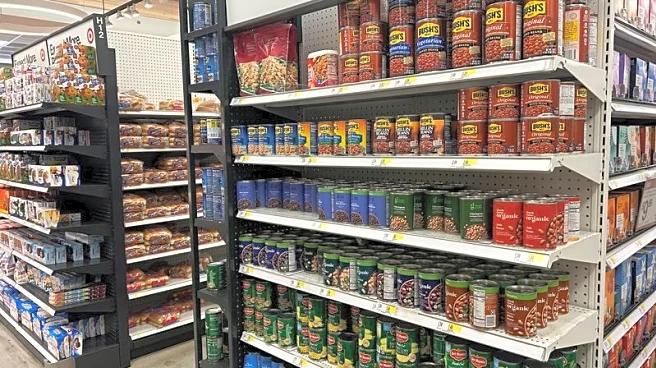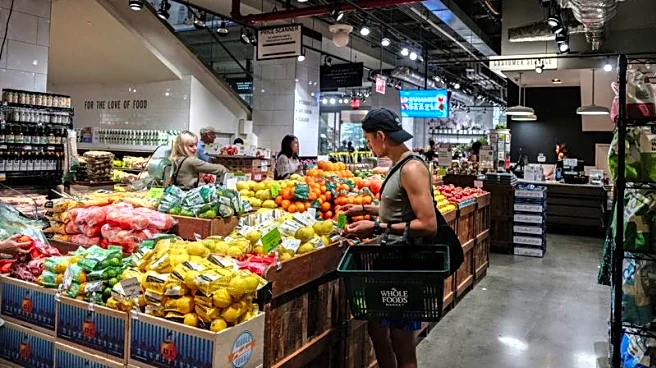What's Happening?
Chocolate prices have increased for the second consecutive year, impacting Halloween candy costs. The Bureau of Labor Statistics reports a 39% rise in candy prices since February 2020. Cocoa, the main ingredient in chocolate, has seen its cost nearly
double due to poor harvests in West Africa, affected by extreme weather and disease. Major chocolate brands like Nestlé, Lindt, Hershey, and Mars have raised prices and are using more fillers like nuts to offset cocoa costs. Consumers are noticing smaller chocolate bags and fewer pieces, leading to a shift towards more affordable non-chocolate options like gummies and SweeTARTS.
Why It's Important?
The rising cost of chocolate is a reflection of broader inflationary pressures affecting consumer goods. As chocolate prices increase, consumers are shifting towards cheaper alternatives, impacting sales dynamics in the candy industry. This trend highlights the economic challenges faced by consumers and businesses alike, as they navigate price increases and adjust purchasing habits. The shift in consumer preferences could have long-term implications for chocolate manufacturers and retailers, potentially altering product offerings and marketing strategies.
What's Next?
As cocoa prices continue to rise, chocolate manufacturers may further adjust their product formulations and pricing strategies. Consumers might increasingly opt for non-chocolate candies, influencing market trends and sales figures. Retailers and manufacturers will need to monitor consumer preferences and adapt to maintain competitiveness. Additionally, ongoing climate challenges in cocoa-producing regions could exacerbate supply issues, prompting further price adjustments and strategic shifts in the industry.
Beyond the Headlines
The shift from chocolate to fruity candies during Halloween reflects broader economic and environmental challenges. The reliance on cocoa from West Africa underscores the vulnerability of global supply chains to climate change and agricultural disruptions. This situation raises ethical considerations regarding sustainable sourcing and fair trade practices. As consumers become more price-sensitive, companies may face pressure to balance cost-cutting measures with maintaining product quality and ethical standards.














